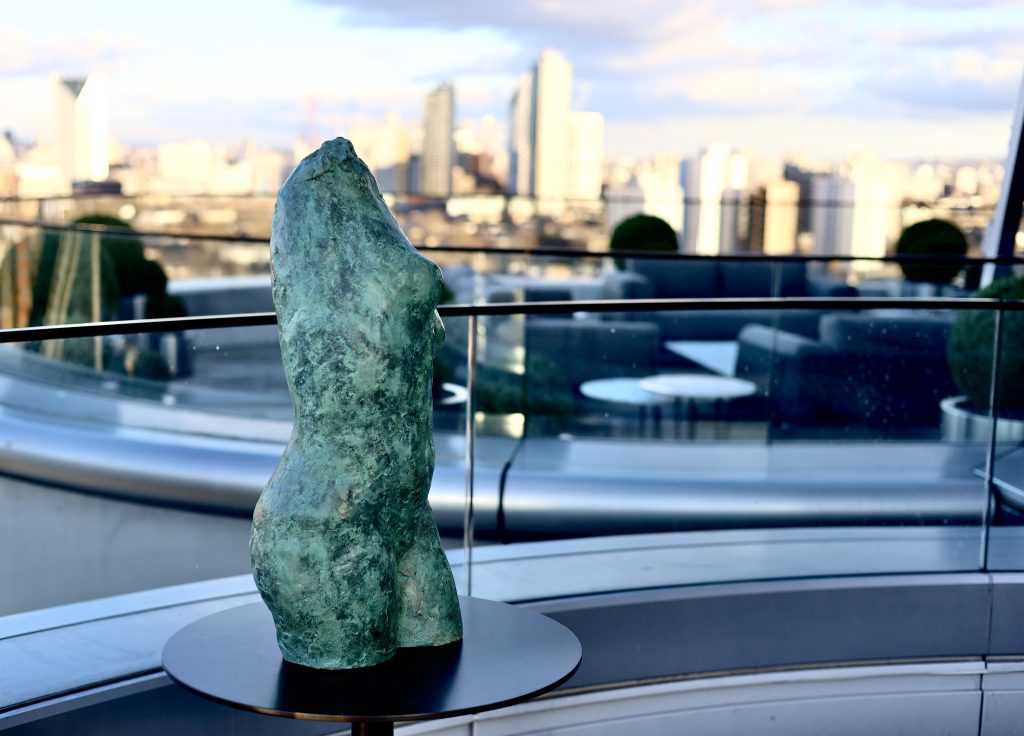Garden Sculptures

Guarantee your garden’s charm with well-chosen sculptures. Options range from timeless stone busts to contemporary metal figures. Choose stone for durability or resin for versatility. Make sure your sculpture complements the garden’s design principles and fits spatially. Consider maintenance—stone is low upkeep, while metal and resin require periodic care. Enhance visual impact by strategic placement, like focal points or using contrasting backgrounds. Experiment with DIY projects using rustic tools or driftwood for unique touches. Understanding these principles guarantees a stunning integration that will make your garden a true work of art. Discover more about choosing and positioning the perfect piece.
Key Points
- Garden sculptures range from animal figures to abstract designs, offering diverse aesthetic options.
- Stone, metal, and resin are common materials, each with unique durability and maintenance needs.
- Proper placement enhances visual impact, including strategic lighting and varied heights.
- Consider the garden’s design principles and size when selecting sculptures for coherence.
- DIY options like driftwood, recycled glass, and kinetic sculptures add personalized, eco-friendly charm.
Types of Garden Sculptures
When selecting garden sculptures, you’ll encounter a diverse range, including animal figures, abstract designs, and traditional statues, each with distinct aesthetic and spatial considerations.
Sculpture styles vary from classic stone busts on pedestals to contemporary metal or resin pieces like embracing lovers or dancing figures.
For site-specific design, consider materials like stone for durability or resin for lightweight, versatile options.
Seasonal decorations can be incorporated into your garden with sculptures designed to enhance different times of the year, such as modern stone birdbaths attracting winter birds or elegant stag statues providing a festive winter theme.
Choosing the Right Sculpture
Selecting the ideal garden sculpture involves evaluating its size, material durability, and alignment with your garden’s design principles. Effective sculpture selection hinges on these site-specific considerations:
- Size considerations: Guarantee the sculpture’s scale fits your garden space. A piece that’s too large can overwhelm, while one that’s too small may get lost.
- Aesthetic harmony: Choose a design that complements your existing garden aesthetic, whether modern, traditional, or eclectic. This ensures visual cohesion in your landscape.
- Maintenance requirements: Factor in the upkeep needed for the sculpture. Durable materials like stone or metal minimize maintenance, but regular cleaning and weatherproofing are often necessary.
Materials and Durability
Selecting the appropriate material for your garden sculpture guarantees both durability and aesthetic appeal in varying outdoor conditions. Stone sculptures, with their timeless elegance, offer intricate details and require minimal maintenance. Their longevity concerns are minimal due to their inherent weather resistance.
Metal sculptures impart a modern touch; when finished with weather-resistant coatings, they excel in durability and require occasional maintenance to prevent rust. Resin sculptures provide design versatility, mimicking stone or metal at a lighter weight, but they can be less durable under harsh conditions.
Comparing these materials, stone demands less upkeep, metal needs protective coatings, and resin offers ease of installation but benefits from regular inspections. Use these maintenance tips to enhance sculpture longevity.
Placement and Display Tips
Maximize your garden sculptures’ impact by strategically placing them where they can be effortlessly viewed and admired, such as near walkways or seating areas. Utilize contrasting backgrounds to make them stand out; for instance, a dark sculpture against a light wall.
To enhance visual appeal and achieve best results, consider these tips:
- Group Sculptures Together: Create a focal point by clustering sculptures, enhancing the overall garden aesthetic.
- Incorporate Lighting: Use outdoor lighting to highlight sculptures at night, creating a magical ambiance.
- Vary Heights: Utilize pedestals or stands to add dimension and visual interest.
Additionally, prioritize sculpture maintenance and sculpture weatherproofing to secure longevity and sustained visual appeal in all weather conditions.
DIY Garden Sculpture Ideas
Now that we’ve covered placement and display tips, let’s explore DIY garden sculpture ideas that harness everyday materials like old metal objects, driftwood, and recycled glass to create unique, site-specific installations.
Repurpose rustic metal tools or utensils to craft intricate, weather-resistant sculptures. Utilize whimsical driftwood to form organic shapes, adding a natural, coastal charm to your garden. Integrate recycled glass bottles for vibrant, eco-friendly pieces that catch sunlight beautifully.
Sculpt with clay or concrete for custom designs tailored to your aesthetic. Enhance your sculptures with LED lights or solar-powered features for nighttime allure. Finally, experiment with kinetic sculptures that move with the wind, adding an interactive dimension to your garden’s visual appeal.
Frequently Asked Questions
How Do I Choose a Garden Sculpture?
To choose a garden sculpture, evaluate your outdoor space’s size and scale. Match the artistic style with your garden’s design. Focus on material selection—opt for durable options like stone or metal that suit your maintenance capabilities.
What Are Garden Statues Called?
You’re wondering, “What are garden statues called?” They’re often referred to as outdoor sculptures or garden ornaments. These pieces, crafted from various material types, like stone or metal, have historical origins in classical design principles and site-specific aesthetics.
How to Place Garden Statues?
For ideal placement height, choose a site-specific location that complements your garden’s design principles. Guarantee the statue becomes a focal point by using a pedestal for elevation, creating visual interest and enhancing its overall aesthetic appeal.
How Do You Age a Resin Garden Statue?
To age a resin garden statue, use painting techniques like faux finishes and diluted stains. Employ weathering processes such as exposing the statue to natural elements and applying a water-yogurt mixture for a natural effect.
Conclusion
Incorporating garden sculptures transforms your outdoor space into a personalized sanctuary. By selecting from varied types, considering material durability, and strategically placing each piece, you create a harmonious and visually appealing environment.
Embrace design principles like balance and focal points to elevate your space. Don’t shy away from DIY projects; they can add unique charm. Ultimately, your garden becomes an extension of your creativity and style, blending aesthetics with nature’s beauty.
Author: Diana Anderson

